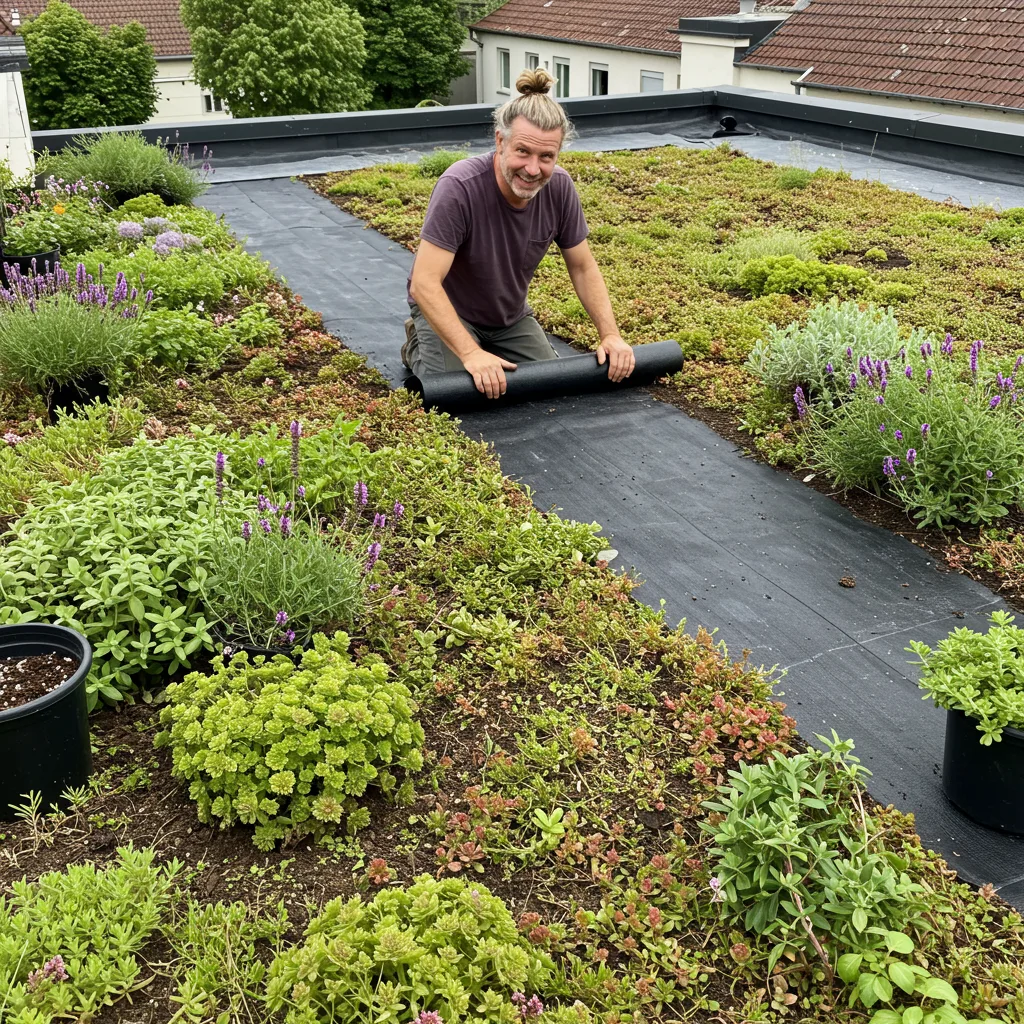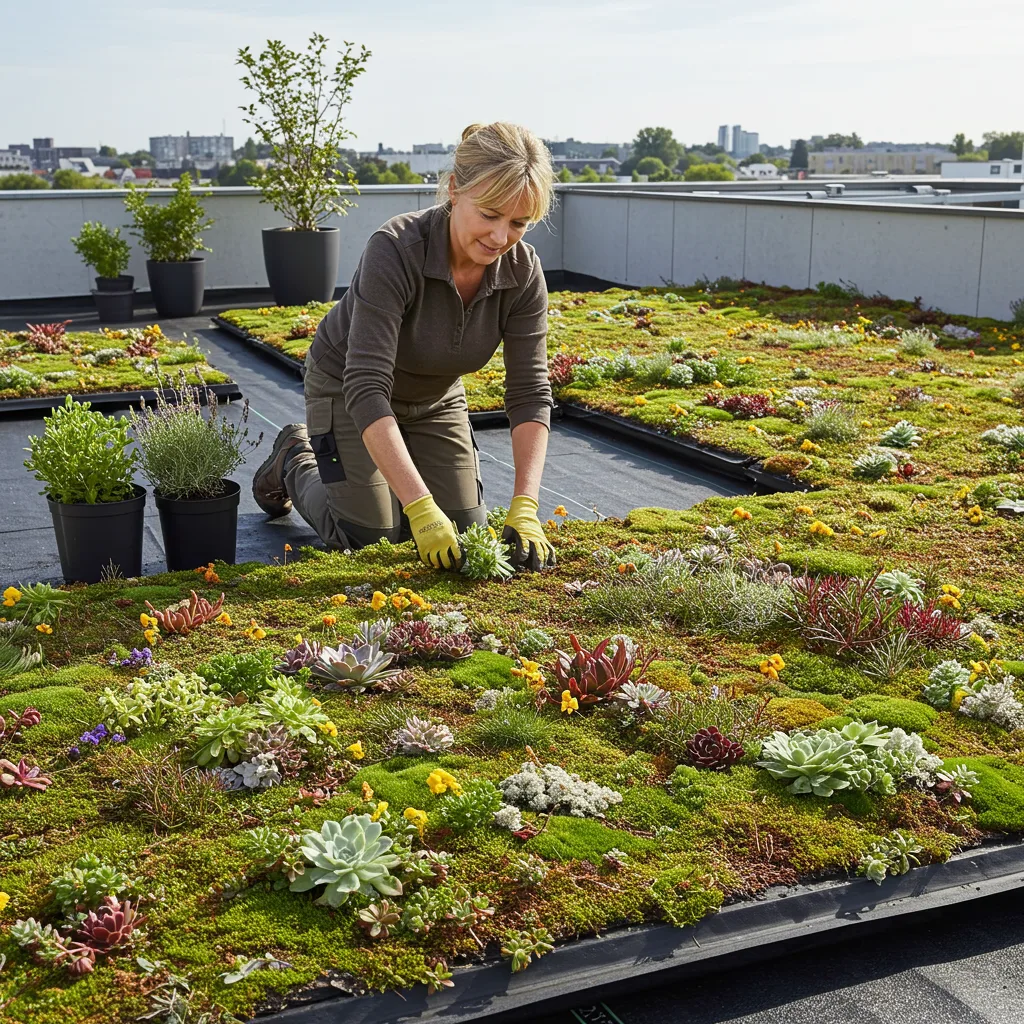DIY Green Roof Installation: Transform Your Home Sustainably in 2025
DIY green roof installation is a transformative way to enhance your home sustainably in 2025, cutting energy costs effectively. U.S. homeowners spend $2,000 annually on heating and cooling, per the U.S. Energy Information Administration, while green roofs reduce energy use by 20%, according to the EPA. Therefore, this guide, crafted for EcoDweller.com, provides a step-by-step approach to create an eco-friendly roof, boosting insulation and biodiversity.

Why DIY Green Roof Installation Matters in 2025
Sustainable roofing is gaining traction. Urban heat islands, affecting 80% of U.S. cities in 2024, per the NRDC, make green roofs vital for temperature regulation. Moreover, DIY setups save 30–50% over professional costs, as noted by the Green Roofs for Healthy Cities. Additionally, they improve air quality and support local wildlife.
Benefits of DIY Green Roof Installation
- Energy Savings: Reduces heating/cooling costs by 20%.
- Environmental Impact: Enhances biodiversity and air quality.
- Cost Efficiency: Saves 30–50% on installation.
- Insulation: Extends roof lifespan by 20–30 years.
- Aesthetic Appeal: Adds a natural, green look to homes.
Step-by-Step Guide to DIY Green Roof Installation
Follow these steps to build your green roof.
1. Evaluate Your Roof Structure
Check load capacity with a contractor or the ASCE. A flat roof needs 20–30 lbs/sq ft support for green roofing.
2. Install a Waterproof Membrane
Lay a $50 rubber membrane from Home Depot, per the Green Roofs for Healthy Cities standards.
3. Add a Drainage Layer
Use $30 gravel or mats to prevent water pooling, as recommended by the EPA.
4. Place a Filter Fabric
Add a $20 fabric layer to block soil runoff, per the NRCS.
Tip: Test Drainage
Pour water to ensure proper flow before adding soil.
5. Add Growing Medium
Spread $50 of lightweight soil mix, per the Green Roofs for Healthy Cities.
6. Plant Vegetation
Use drought-tolerant plants ($30) from the Burpee catalog, suitable for roofs.
7. Install Irrigation (Optional)
Add a $40 drip system, per the EPA, for dry climates.
8. Secure Edges
Use $20 edging materials, as advised by the ASCE, to prevent erosion.
9. Monitor and Maintain
Check plants monthly with a $10 watering can from the Home Depot.
10. Comply with Local Codes
Obtain a $50 permit from your city, per the EPA.
Cost and Savings Comparison of DIY Green Roofs
| Component | Cost (DIY) | Cost (Professional) | Annual Savings |
|---|---|---|---|
| Membrane | $50 | $150 | $200–$400 |
| Drainage | $30 | $100 | Included |
| Soil | $50 | $150 | Included |
| Plants | $30 | $100 | Included |
How to Maintain Your Green Roof
Regular care ensures longevity. Water plants during dry spells, per the Green Roofs for Healthy Cities. Remove weeds biannually with a $10 tool from the Home Depot. Additionally, inspect the membrane yearly with a $20 flashlight from the REI.
Tip: Seasonal Checks
Inspect after heavy rain or snow to catch issues early.
Case Study: A Home’s Green Roof Success
In 2024, a Seattle homeowner built a 100 sq ft green roof for $160, saving $300 annually on energy, per their EPA audit. They added plants in 2025, boosting insulation by 25%.
Challenges of DIY Green Roof Installation
Challenges include roof weight limits, though assessments help. Moreover, maintenance requires effort, but guides simplify it. For instance, consulting the Green Roofs for Healthy Cities resolves issues effectively.
Frequently Asked Questions
What materials do I need for a DIY green roof?
A membrane, drainage, soil, and plants suffice. See our sustainable living guide.
How much can I save?
Savings range from $200–$400 yearly. Check our cost table.
Is my roof suitable?
Check load capacity with ASCE guidelines.
Conclusion
DIY green roof installation transforms your home sustainably in 2025, saving energy and enhancing eco-friendliness. From evaluating structure to maintaining plants, these steps empower homeowners. For example, starting small maximizes benefits. Visit EcoDweller.com for more, including our green home trends and eco-friendly car insurance guides. Ready to go green? Share your project in the comments or contact us!

